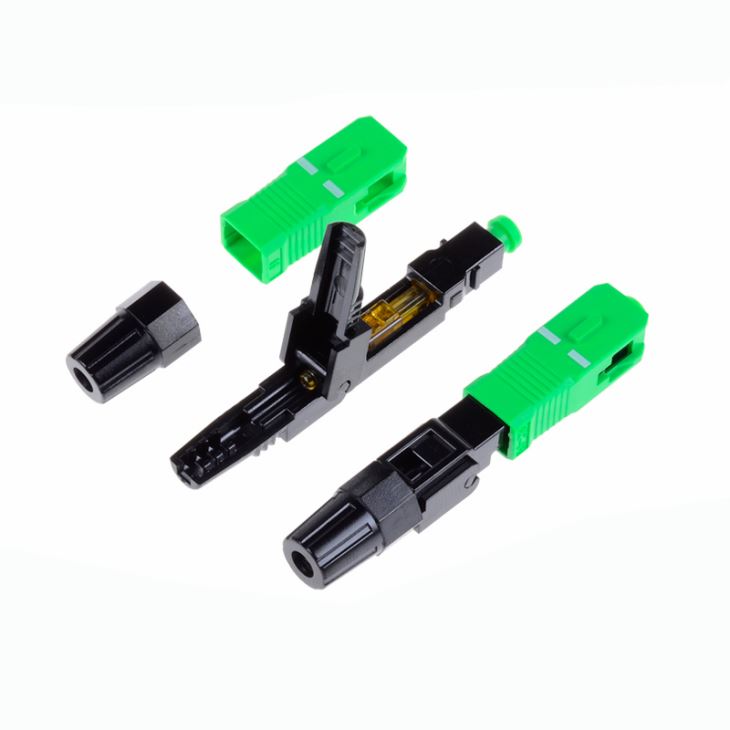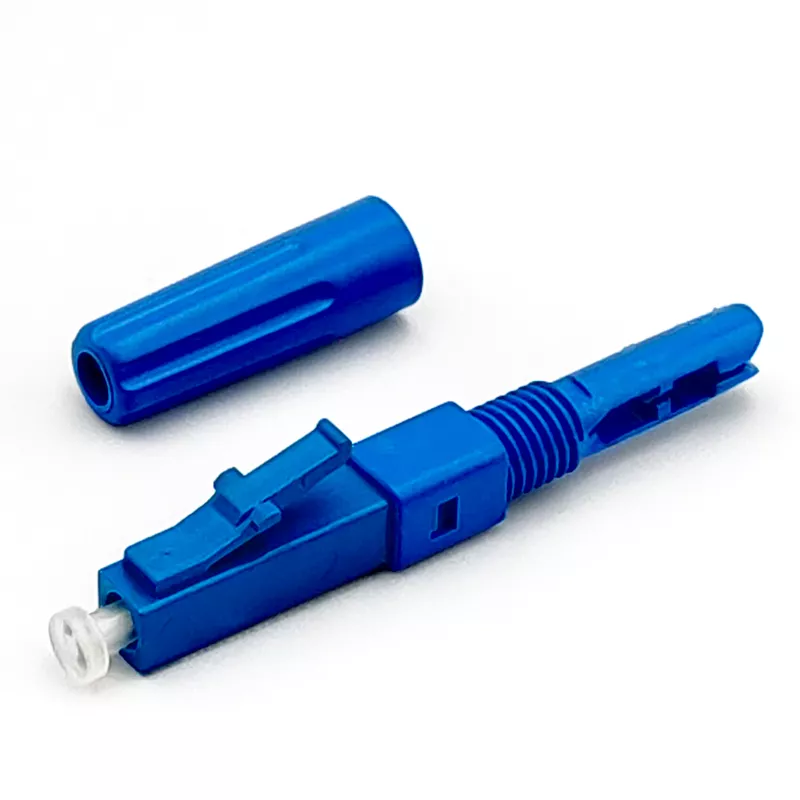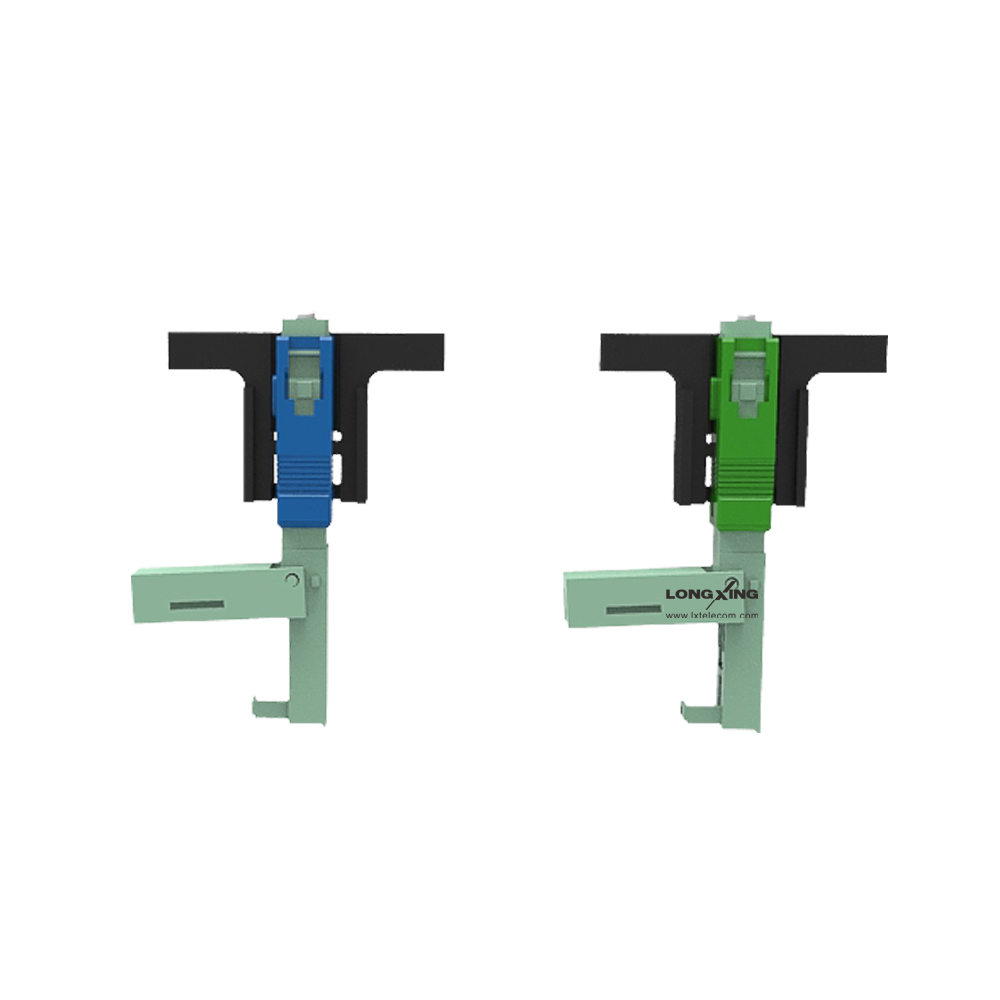Mastering SC and LC Fast Connectors for Fiber Optic Applications

Connecting Fiber Optics
Understanding the Importance of Fast Connectors in Fiber Optic Applications
Fast connectors play a crucial role in fiber optic applications by providing a quick and efficient means of connecting optical fibers. These connectors are designed to simplify the installation process and minimize the time required for making reliable fiber optic connections. Whether it's for telecommunications, data centers, or industrial networks, the use of fast connectors ensures rapid deployment and maintenance of fiber optic systems. Additionally, fast connectors contribute to cost savings by reducing labor expenses associated with traditional connector termination methods.
Fiber Optic Basics
Singlemode vs. Multimode Fiber Optics
When it comes to fiber optics, understanding the differences between singlemode and multimode fiber optics is essential. Singlemode fiber optics are designed to carry a single ray of light, allowing for high bandwidth and longer transmission distances. On the other hand, multimode fiber optics can carry multiple light rays simultaneously, offering greater capacity for data transmission over short distances.
The choice between singlemode and multimode fiber optics depends on specific application requirements. Singlemode fibers are ideal for long-distance telecommunications and data networks due to their high bandwidth capabilities. In contrast, multimode fibers are commonly used in shorter reach applications such as local area networks (LANs) and data centers where high data rates are required over relatively shorter distances.
Fundamentals of Fiber Optic Connectors
Fiber optic connectors play a critical role in ensuring efficient and reliable connections within fiber optic systems. These connectors facilitate the precise alignment of optical fibers, enabling seamless transmission of light signals with minimal loss. The type of connector used can significantly impact the performance and reliability of a fiber optic network.
Connector technology continues to evolve, introducing advancements that enhance the overall efficiency and effectiveness of fiber optic connections. From traditional epoxy-and-polish connectors to innovative fast connectors, the evolution of connector technology has revolutionized the deployment and maintenance of fiber optic networks.

Fast Connector Innovations
Advantages of Fast Connectors
Fast connectors offer a range of advantages that make them a preferred choice for fiber optic applications. One key advantage is their ease of installation, which significantly reduces the time and effort required to establish connections. These connectors are designed to be compatible with different fiber types, allowing for seamless integration into various network configurations. Additionally, the cost-effectiveness and time-saving benefits of fast connectors contribute to overall efficiency in deploying and maintaining fiber optic systems.
The rapid connector technology has transformed the way fiber optic connections are made, providing a reliable and efficient solution for high-speed data transmission. With innovative features such as pre-polished ferrules and mechanical splicing techniques, fast connectors have revolutionized the process of establishing fiber optic links. The advancements in fast connector technology continue to drive progress in fiber optic technology by facilitating quick and reliable connections essential for modern communication networks.
SC and LC Advantages
Understanding SC Connectors
SC connectors, or Subscriber Connectors, are widely utilized in fiber optic technology due to their numerous benefits and applications. These connectors feature a push-pull coupling mechanism that ensures secure connections, making them suitable for high-density environments such as data centers and telecommunication networks.
One of the key advantages of SC connectors is their excellent repeatability and interchangeability, which guarantee consistent performance in fiber optic systems. Their simple push-pull design also facilitates quick installation and removal, reducing downtime during maintenance activities. Additionally, SC connectors are known for their robustness and durability, making them ideal for demanding applications where reliable connections are paramount.
The key features and advantages of SC connectors position them as a preferred choice for various fiber optic applications, offering reliability, ease of use, and consistent performance.
Exploring LC Connectors
LC connectors have gained popularity in fiber optic applications due to their versatility and exceptional performance. These small form-factor connectors are known for their compact size, making them suitable for high-density installations where space is a premium. LC connectors offer low insertion loss and high precision alignment, ensuring minimal signal degradation in fiber optic links.
When compared to other connector types, LC connectors stand out for their superior performance in terms of bandwidth capacity and transmission efficiency. Their compatibility with both singlemode and multimode fibers further enhances their flexibility in diverse network configurations.
The advantages of LC connectors make them an optimal choice for modern fiber optic systems where space-saving design and reliable performance are essential.

Enhancing Fiber Optic Connections with Fast Connectors
The Vital Role of Fast Connectors in Fiber Optic Connections
Fast connectors play a vital role in enhancing fiber optic connections, providing a swift and reliable solution for establishing seamless links within optical networks. By expediting the installation process and ensuring compatibility with various fiber types, fast connectors contribute to the overall efficiency of fiber optic systems. Their innovative features, such as pre-polished ferrules and mechanical splicing techniques, revolutionize the process of connecting optical fibers, enabling rapid deployment and maintenance of high-speed data transmission networks.
Key Advantages of Fast Connectors
The use of fast connectors offers several key advantages that significantly improve fiber optic connections. These advantages include their cost-effectiveness, time-saving benefits, and compatibility with different network configurations. Additionally, their impact on the evolution of fiber optic technology is noteworthy, as they continue to drive progress by providing quick and reliable solutions for modern communication networks.
Revolutionizing Fiber Optic Technology
Fast connectors have revolutionized fiber optic technology by introducing innovative features and advancements that enhance the speed and reliability of data transmission. Their impact extends beyond mere connectivity, contributing to the overall evolution of fiber optic systems.
See Also
The Ultimate Guide to Waterproof Fiber Patch Cable for Outdoor Networking
The Ultimate Guide to Selecting Fastconnect Drop Patch Cable for Outdoor Use
Understanding Single Mode Fiber Optic Cables for FTTH
2024: Understanding the Capacity of Outdoor Water-proof FTTH Distribution Terminal Box with 24 Ports
2024 Guide: Understanding FTTH Terminal Box and Optical Accessories
About US
Follow Us
AnetFiber company's main products are indoor and outdoor optical fiber cables, outdoor waterproof pre-connected fiber-to-the-home products, PLC optical fiber splitters, optical fiber jumpers and pigtails, MTP®/MPO high-density big data product solutions, optical fiber field quick connectors and research and development molding, injection molding and production of optical fiber distribution boxes, optical fiber chassis cabinets, the market has expanded to the world, Europe, America, Asia, the Middle East and Latin America.
Address
Shenzhen City, Baoan District, Yanluo Street, Tangxiayong Community, Yangyong Industrial Road, Tonggangda New Energy Vehicle Park 406
Contacts
+86 199 2655 3586

